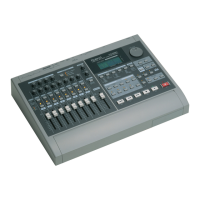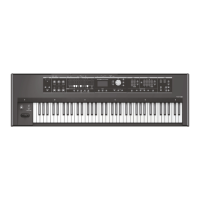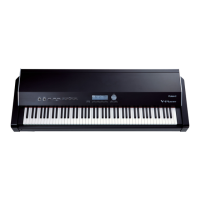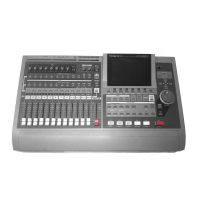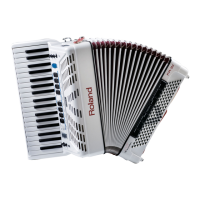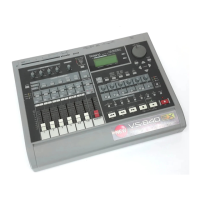137
Chapter 8: Appendix
The VS-880 allows you to copy songs from the Internal IDE drive to any of your external SCSI drives. The
communications between the IDE buss and the SCSI buss are all handled by the VS-880 internally.
There are two main causes of SCSI problems with any computer device including the
VS-880: Cables and Termination.
SCSI Cables
Don’t be fooled by disk drive suppliers that tell you, “our cables work just fine on a PC computer”. An
unstable SCSI buss may require the host computer (VS-880) to try over and over to communicate with the
drive. This is fine for a PC since the user doesn’t really notice that the PC has to make a number of
attempts at communication before actually writing the computer data to disk. However, the large amount
of data transfer for digital audio requires a very stable SCSI buss with solid communications at all times.
Since the SCSI buss is actually a form of transmission line, impedance matching is very important. If the
impedance is not properly matched, “ghost reflections” will occur within the cable which will alter or
corrupt the data on the line.
SCSI specifies a cable impedance of 100 Ω ±10%. Unfortunately, the vast majority of SCSI cables sold today
have an impedance closer to 50 Ω. This results in up to 50% of the signal being reflected back to the VS-880.
Another problem in cable construction is the amount of shielding used and the quality of the cables
themselves. Some users have assumed that “molded connectors” are automatically equal to “high quality”
- this is not the case.
The SCSI specification calls for the internal cable wiring to consist of 25 twisted pairs (each pair consists of
one signal and one ground). However, many cables only contain a total of 26 wires - 25 signals plus one
overall ground.
“Double shielding” - where each twisted pair has its own shield in addition to the overall cable’s shield - is
required by the SCSI specification to eliminate crosstalk and RFI.
At low data speeds and for short cable runs (less than 1 foot), the above shortcomings may not be too
much of a problem. With longer cable runs (3-6 feet) and higher data rates (such as those common in the
VS-880), cable reflections do become a factor, resulting in random data errors which in turn cause problems
ranging from noise in the audio to the VS-880 ceasing to operate. Because these errors are indeed random,
the resulting symptoms are also random and may not be completely repeatable (adding to confusion and
frustration when trying to debug them).
SCSI Termination
Since the VS-880 end of the SCSI chain is internally terminated, the other physical end of the external SCSI
chain must be terminated as well. i.e. If you add one 1 Gigabyte external drive to the SCSI connector of the
VS-880, it must also be terminated since it is the last device on the other end of the SCSI chain.
For Reference Only: Most disk drives can be terminated internally or externally.
Internal termination is usually provided by small in-line resistor packs called
“SIPs”. They plug directly into sockets on the main controller circuit board of the
physical drive unit. Internal termination is extremely rare. Most commercial disk
drives available today provide for external termination.
CAUTION: DO NOT INSTALL SIPs terminators backwards. Pin # 1 is designated
with a dot. Socket # 1 of the circuit board will be designated with a 1, a dot, a
square, or some other designation for Pin # 1. Match Pin # 1 to Socket # 1.

